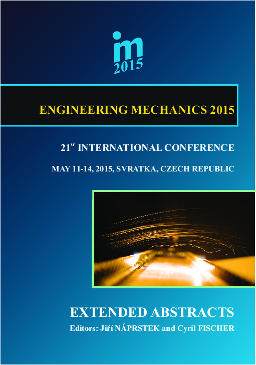Proceedings Vol. 21 (2015)

ENGINEERING MECHANICS 2015
May 11 – 14, 2015, Svratka, Czech Republic
Copyright © 2015 Institute of Theoretical and Applied Mechanics, Academy of Sciences of the Czech Republic, v.v.i., Prague
ISSN 1805-8248 (printed)
ISSN 1805-8256 (electronic)
list of papers scientific commitee
pages 258 - 259, full text
Knowledge of the properties of soft, viscoelastic materials at high strain rates are important in our understanding of their role during blast or impact events. Although there is a large body of literature containing compressive data, this rarely deals with strain rates above 250 s^-1 which becomes increasingly important when looking at the design of composite structures where energy absorption during impact events is high on the list of priorities. The high strain-rate characteristics of a specific porous blast energy absorbing material measured by modified Split Hopkinson Pressure Bar apparatus is presented in this study. Testing these low impedance materials using a metallic split Hopkinson pressure bar setup results in poor signal to noise ratios due to impedance mismatching. These difficulties are overcome by using polymeric Hopkinson bars. Conventional Hopkinson bar analysis cannot be used on the polymeric bars due to the viscoelastic nature of the bar material. Implementing polymeric Hopkinson bars requires characterization of the viscoelastic properties of the material used. In this paper, 16 mm diameter Polycarbonate bars are used as Hopkinson pressure bars. This testing technique is applied to materials composed of porous glass/ceramic filler and polymeric binder, with density of 125 - 300 kg/m³ and particle size in range of 50 μm – 2 mm. Testing of polymeric composites at high strain rates allows the development of better constitutive models that is necessary for next numerical simulations.
back to list of papers
Text and facts may be copied and used freely, but credit should be given to these Proceedings.
All papers were reviewed by members of the scientific committee.

 Powered by
Imce 3.20 © 2023, Pavel Formánek, Institute of Thermomechanics AS CR, v.v.i. [generated: 0.0110s]
Powered by
Imce 3.20 © 2023, Pavel Formánek, Institute of Thermomechanics AS CR, v.v.i. [generated: 0.0110s]